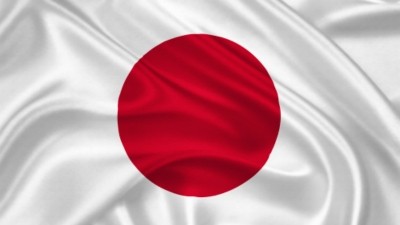Salt reduction in Asia: Ajinomoto on regional nutritional focus with umami key to reformulation

Ajinomoto’s plans for Asia are part of its larger global nutrition strategy dubbed ‘Nutrition Without Compromise’, but for this region in particular, salt reformulation and increasing protein intake are particularly important due to public health and demographic concerns.
“High salt intake is linked with high blood pressure, which is in turn linked with various public health concerns such as stroke, heart disease and cognitive health impairment. In Asia, several countries are now taking over double the recommended daily amount of salt,” Manasi Pethkar from the Ajinomoto Science Group & Planning Group, Global Communications Department told FoodNavigator-Asia.
“The World Health Organisation (WHO) recommended amount of salt intake is 5g per day – at present the global average daily salt intake is roughly double that, and the top of this list includes countries such as Thailand (13g), Japan (12g), Vietnam (12g), the Philippines (11g) and Myanmar (11g).
“As such, Ajinomoto wants to help reduce salt intake in the region, and we believe we are uniquely positioned to do so with our amino acid technology and ability to add in umami to foods, giving these a meaty, savoury flavour so salt content can be reduced without losing flavour.
“Previous scientific research has shown that MSG – the source of the umami flavour - can be used to improve the palatability of foods, leading to some 30% in salt intake, as MSG has two-thirds less sodium content than salt.”
Pethkar also highlighted a variety of reduced-salt technologies and products that Ajinomoto has created in hopes of reducing salt intake - Although most of these are currently still focused on the Japanese market, the aim is to enlarge the scope as consumer needs rise.
“We have a slew of reduced-salt products such as the Umashio 50% less-salt seasonings, Knorr 40% less-salt soups, and even RTE foods such the Tai Pei Asian Foods range. In Japan, we have also promoted salt reduction via local government partnerships such as in the Iwate prefecture which saw the successful reduction of consumer salt intake by 10% to 20% over four years,” said Pethkar.
“Such partnerships include cooperation between ourselves with government, media and retailers to run awareness campaigns, create low-sodium menus, do in-store promotions and more.”
In Asia, the focus is also on minimising the impacts of any product reformulation on taste and affordability, which are the areas key to attracting and retaining local consumers.
“Not compromising taste is important, which we are doing using umami and our salt reduction technologies, but the other component to this is to make sure not to compromise consumer access to these lower-salt foods,” said Pethkar.
“So keeping the price strategic and ensure products are available in as many countries as possible is a priority to us, in addition to ensuring these are made suitable to local food cultures to ensure acceptance.”
Nutrient-rich products
Many developing countries in Asia are known to have high rates of stunting and malnutrition, especially those in South East Asia such as Indonesia, Philippines, Vietnam, Myanmar, and Cambodia. Dietary protein deficiency is a clear issue for these countries, and Ajinomoto believes it can make a difference by focusing the other part of its strategy on the optimisation of protein and other nutrients.
“Undernourishment is a very real challenge for young children in many countries in Asia, who very much need protein and various nutrients to support growth spurts in the early part of their lives,” said Pethkar.
“Ajinomoto has developed a variety of new products with increased nutritional content to cater to consumers who need these – for example, South East countries like Vietnam, Philippines, and Indonesia can expect to see an upcoming boost in new products for these markets to tackle nutritional deficiencies.
“In Vietnam for instance, we will be launching a seasoning fortified with calcium, and in the Philippines there will be a rice topping fortified with calcium – what we have been doing here is to try to match the products with the nutritional issues that each market is facing.”
In more developed Asian countries, the issue mostly surrounds ageing populations and elderly consumers losing muscle mass due to a lack of protein intake – and Pethkar believes that this group should be eating even more protein than they are doing now.
“Experts now believe that older adults actually need to consume even more protein than the general recommendation, which is 0.8g per kg body weight – the recommendation is for this to be boosted up to 1.0 to 1.2g per kg,” she said.
“As it is though, the prevalence of protein intake below 0.8g itself is already quite high between 14% to 30%, especially amongst older adults living alone.”
Japan is well-known to have one of the world’s most rapidly-ageing populations, with other Asian nations such as Singapore and Thailand fast catching up, and Pethkar stressed that this makes protein-fortified products ever more important.
“This is why we’ve developed products such as protein-enriched Knorr soups which also contain lentils for easily accessible protein in a sachet, in addition to other protein-fortified RTE meals and seasonings in Japan,” she said.
“In addition, we know that it gets harder for the elderly to eat meat as they age due to its toughness, so we have also developed a special meat-softening powder to soften meat so they can obtain some protein naturally this way too.”
Profiling to improve
Whether it is salt reduction or nutritional enhancement though, Ajinomoto is currently employing its Ajinomoto Nutrition Profiling System (ANPS) to analyse and score hundreds of its products seven countries, including Japan, Thailand, Vietnam, Indonesia, Philippines, Malaysia and Brazil.
“Reformulation needs to be structured, which is why we are using this ANPS system to conduct this internally on various B2C products,” said Pethkar.
“The system will mainly analyse and score the various products based on nutritional gaps and places for improvement, then profile the nutritional value and issues before moving these for reformulation and sending products to be assessed by consumers.”
What this could mean is that once Ajinomoto completes profiling products in these seven countries, consumers could expect a wave of healthier reformulated products to appear on shelves moving forward though this is likely to take some time.

















